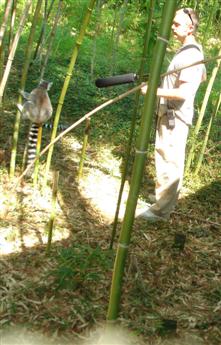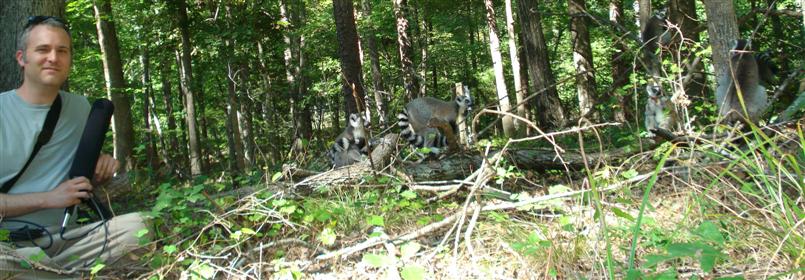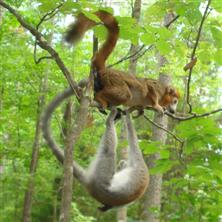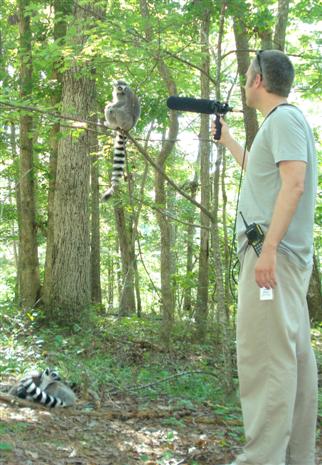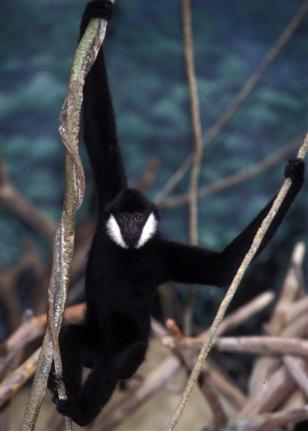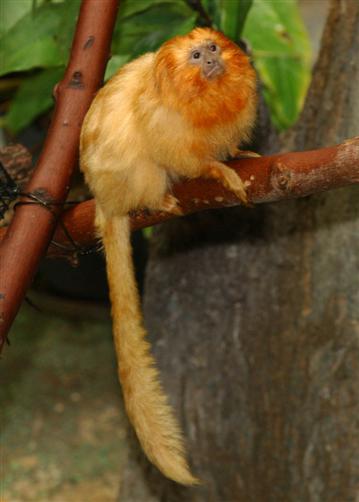[Note: I observe taxonomic ranks found in the Conservation International Tropical Field Guide Series: Lemurs of Madagascar, Second Edition. Conservation International has raised many lemurs from subspecies to full species status. Some of these changes of status are not observed by the Duke Lemur Center. I have no authority to comment on this matter; I have simply chosen, for consistency, to adopt Conservation International's ranks, since I already use the field guide for other information.]
In this study, I wanted to investigate whether alarm responsiveness follows phylogeny in at least a broad sense. From observations of interspecific alarm contagiousness at the DLC, I had guessed that more closely related (to be precise, cladistically related) species would be more responsive to one another's calls. The results were promising, but not conclusive, and there are numerous confounding factors, especially habituation and housing proximity. It is difficult to establish whether the animals have simply adapted to one another's calls in captivity, or whether the responses really are hard-wired (or based on acoustic similarity of calls, itself related to phylogeny).
Even so, some of the responses were encouraging. Counting only actual alarm vocalizations as positive responses:
In the first video (below left), Varecia responded—after a tense pause—with aerial alarms to playback of Propithecus aerial alarms. These animals appear in the same clade in both my source phylogenies. Though they are believed to have diverged 40 million years ago, their aerial alarms are strikingly similar. In the second video (below right), Propithecus responded to playback of their own aerial alarm, followed by an aerial alarm response from a group of nearby Varecia.
Recording and observation of lemurs at the DLC:
-Photo gallery
-Vids
-Audio
Mention of Joe Macedonia and link to Wiki
Use of the research in my music
.............................................................
Other Primate research
Building library of sounds
Possible future compositions
WNPRC
Brookfield Zoo
-Audio
-Links to images/websites
------------------
Instruments based on swamp sounds
Instruments in general

